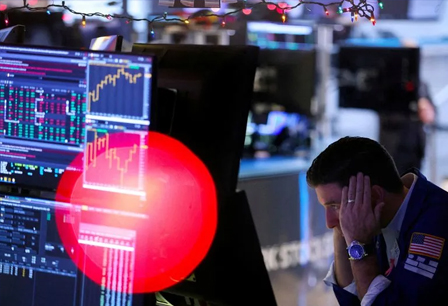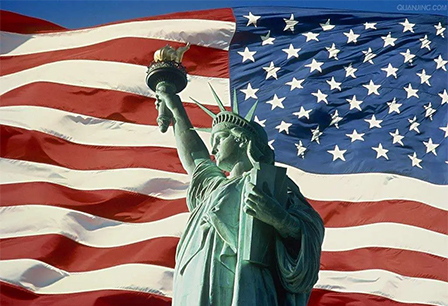As prices surged in the West following Russia’s invasion of Ukraine, Vladimir Putin was confident enough about the health of his own economy to gloat.
The Russian leader said last summer that those who blamed his actions for inflation didn’t “know how to read or write”. Twelve months on and Putin may not be in the mood to thumb his nose at the US and Europe.
While inflation is now falling almost everywhere in the West, it is rising in Russia.
Officially, inflation in Russia is still well below its target rate. But last week the Russian Central Bank (RCB) raised the Bank Rate by a whole percentage point to 8.5pc, in a sign of growing unease about price rises.
It was the Bank’s first intervention in more than a year. Policymakers in Moscow explained their decision by warning that inflation was accelerating.
Pressure is building on multiple fronts: the rouble has plunged, driving up the cost of imports; a tight labour market is driving high wage growth; and government spending is further boosting demand just as sanctions are constraining supply.
After Russia’s full-scale invasion of Ukraine, inflation surged in Russia, then plummeted. In April, consumer prices were rising at a rate of 2.3pc – roughly half the central bank’s target rate, which is higher than the UK’s at 4pc.
Now the numbers are on the up again. CPI rose to 3.3pc in June. This time, price growth is much more likely to be sustained.
Inflation initially fell because household spending was depressed, says Liam Peach, senior emerging markets economist at Capital Economics. At the same time, the energy price boom pushed up Russia’s trade surplus and strengthened the rouble. In turn, this reduced the cost of imports.
“Now a lot of those factors have reversed,” says Peach. “There’s a lot of pent up demand in the economy, but it is now bumping up against quite severe supply constraints. The Government spending that has come on top of that, and now the rouble weakness, is quite a toxic mix for Russia’s inflation dynamics.”
Inflation remains in single digits for now. But the threat of hyperinflation – an extreme scenario in which prices rise by more than 50pc a month – looms large in Moscow.
“It can obviously happen in Russia,” says Timothy Ash, associate fellow in the Russia and Eurasia programme at Chatham House. “Look at the 1990s. They have been there before.”
Inflation soared to 1,500pc in the wake of the collapse of the Soviet Union as state price controls were abolished and “shock treatment” saw Western market forces introduced at pace.
Ultimately, hyperinflation does not currently look likely today.
“In a hyperinflationary scenario you’re talking about an end of regime-style scenario,” Ash says. “That is the collapse point, when an economy is collapsing.
“You have got a few things that would need to come together, but the longer [the war] goes on, maybe three years down the line, it is a much increased probability.”
Hyper inflation could hit if sustained political instability triggered a crash in the currency, at the same time as sanctions and falling commodity prices were hitting national revenues, he says.
Even if this situation is avoided, prices in Russia are about to soar.
“With Russia’s economy now more supply-constrained than at any point since the war started, I think it is only a matter of time before inflation pressures accelerate,” says Peach.
The RCB warned that inflation will rise to between 5pc and 6.5pc by the end of this year. Capital Economics expects CPI will more than double by next year.
Factory gate inflation will be even more extreme: Capital Economics expects this will soar from 0.5pc in June to 20.3pc by January.
Inflation may already be worse than government data shows.
Ash says: “Obviously they have an interest in understating it. So we should raise question marks about it. They are publishing a lot less data.”
Steve Hanke, a Professor of Applied Economics at The Johns Hopkins University, argues that annual inflation in Russia is already at 60pc.
Hanke uses an alternative method of tracking inflation based on purchasing power parity – a theory that a product should have the same price in two countries when compared in the same currency. Hanke’s method tracks the price of all goods and services rather than using a “basket” of representative goods.
It is therefore more all-encompassing but it is also more closely tied to exchange rates. This approach can be limited for isolated economies such as Russia, where imports make up only 18pc of GDP, says Tatiana Orlova, of Oxford Economics.
Hanke argues that Government spending in Russia means high inflation is inevitable.
“Inflation is always and everywhere a monetary phenomenon, and the Russian money supply has been rapidly accelerating since November 2021,” says Hanke.
The ghost of hyperinflation means the central bank is likely to move hard and fast to tackle inflation.
Peach says: “If you think back to Russia’s history, inflation really is evil in Russia. It is the one thing that policymakers want to beat at all costs.”
Interest rates in Russia will likely have climbed to 10pc or 12pc by the end of the year, he believes.
As an emerging market, Russia has much lower levels of private sector debt. Far fewer households have mortgages or large loans. This means it takes larger rises in interest rates to have the same effect on spending and inflation, says Peach. An interest rate of 7pc is “neutral”.
Low debt levels mean Russian households will face less immediate pain from 12pc interest rates than people would be in the UK. However, there will still be a price to pay.
Government borrowing costs are already incredibly high, says Peach, with yields on 10-year Russian local currency bonds at 11pc.
Increases in the Bank Rate will push up government debt-servicing costs. If inflation hits 8pc, yields on government debt would likely rise to around 14pc, says Peach, putting further pressure on the public purse.
Tax rises for the most profitable sectors of the economy would be likely in this scenario and the Kremlin would look to slash budgets to avoid spiralling debt costs, he says. The Russian government has already begun raising taxes on the banking sector and brought in 10pc spending cuts for some regions.
High rates would also take a toll on non-financial corporations, such as mining and oil and gas companies, that do have debts. These businesses are also in sectors where revenues are already under pressure from low energy prices and sanctions.
As the war in Ukraine drags on, higher rates to tackle inflation look more and more likely.
Hanke says: “When it comes to inflation in Russia, it’s up, up, and away.”












